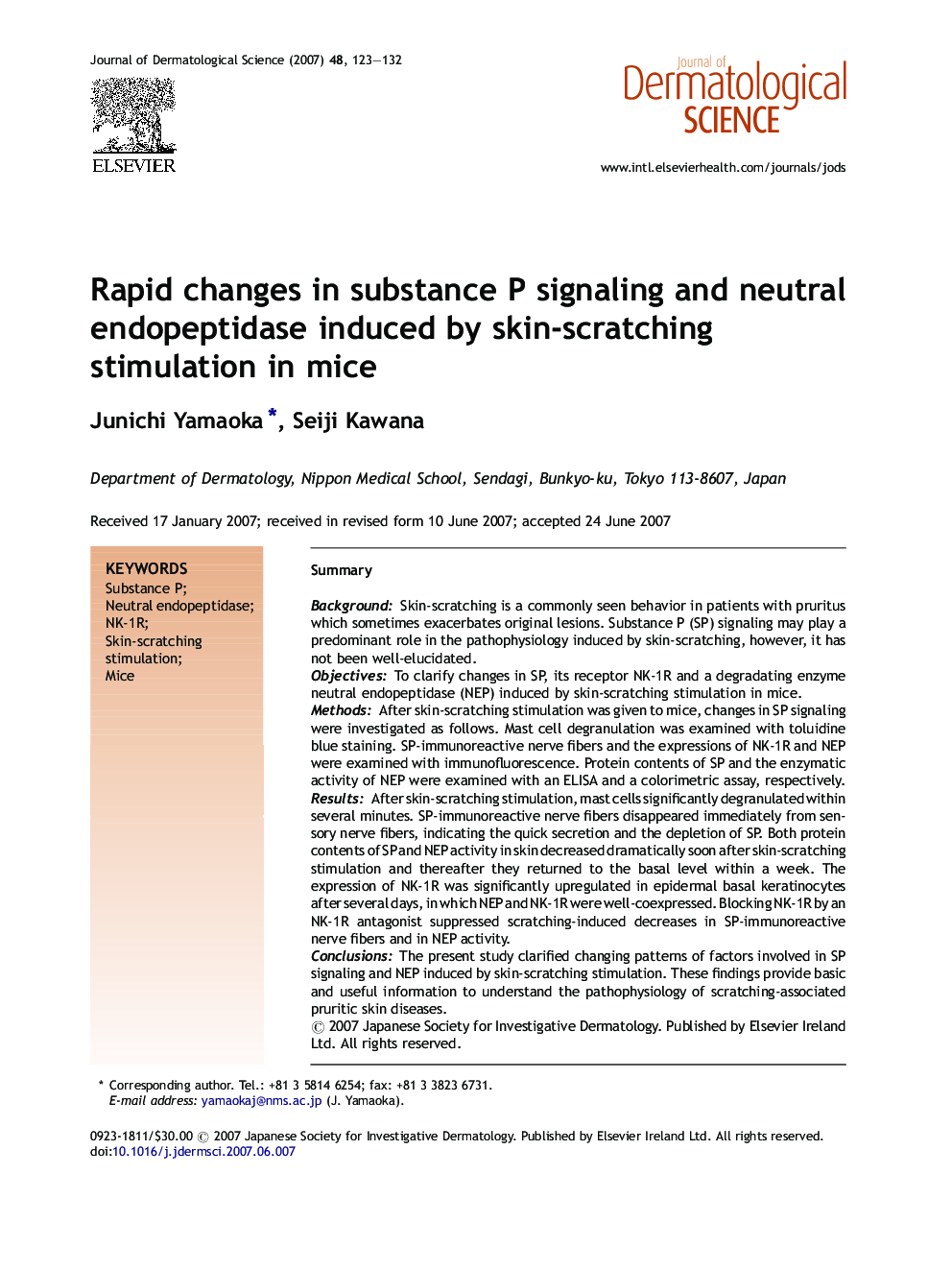| Article ID | Journal | Published Year | Pages | File Type |
|---|---|---|---|---|
| 3214307 | Journal of Dermatological Science | 2007 | 10 Pages |
SummaryBackgroundSkin-scratching is a commonly seen behavior in patients with pruritus which sometimes exacerbates original lesions. Substance P (SP) signaling may play a predominant role in the pathophysiology induced by skin-scratching, however, it has not been well-elucidated.ObjectivesTo clarify changes in SP, its receptor NK-1R and a degradating enzyme neutral endopeptidase (NEP) induced by skin-scratching stimulation in mice.MethodsAfter skin-scratching stimulation was given to mice, changes in SP signaling were investigated as follows. Mast cell degranulation was examined with toluidine blue staining. SP-immunoreactive nerve fibers and the expressions of NK-1R and NEP were examined with immunofluorescence. Protein contents of SP and the enzymatic activity of NEP were examined with an ELISA and a colorimetric assay, respectively.ResultsAfter skin-scratching stimulation, mast cells significantly degranulated within several minutes. SP-immunoreactive nerve fibers disappeared immediately from sensory nerve fibers, indicating the quick secretion and the depletion of SP. Both protein contents of SP and NEP activity in skin decreased dramatically soon after skin-scratching stimulation and thereafter they returned to the basal level within a week. The expression of NK-1R was significantly upregulated in epidermal basal keratinocytes after several days, in which NEP and NK-1R were well-coexpressed. Blocking NK-1R by an NK-1R antagonist suppressed scratching-induced decreases in SP-immunoreactive nerve fibers and in NEP activity.ConclusionsThe present study clarified changing patterns of factors involved in SP signaling and NEP induced by skin-scratching stimulation. These findings provide basic and useful information to understand the pathophysiology of scratching-associated pruritic skin diseases.
